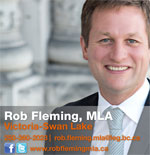AMALGAMATION – where do we go from here?
Michael J. Prince is the Lansdowne Professor of Social Policy at the University of Victoria. A political scientist, he follows local, provincial and federal politics and governments.
The question of amalgamation in the Capital Region is a contentious and complex topic with no straightforward or guaranteed answers. In Saanich and on the Saanich Peninsula two very different next steps seem likely to play out over the next four years.
In Saanich, the non-binding referendum questions were not directly about amalgamation, as they were in other CRD municipalities; no mention here of asking for a provincial government funded study or on reducing the number of municipalities in Greater Victoria.
Rather, Saanich voters were asked if they would support their Council initiating a community-based review of the governance structure and policies within Saanich and on partnerships within the Region.
On that question, 88.5 percent of Saanich voters said yes. This can be interpreted in several ways: as widespread support for making the civic governance of Saanich more transparent and open to the public, as expressed by the mayor-elect, Richard Atwell; as modernizing policies; as adopting best practices for service delivery; and, perhaps, examining options for sharing some services through partnerships with other municipalities in the Region. None of these imply amalgamation. As the largest municipality in Greater Victoria, there is little incentive for Saanich leaders or residents to rush into amalgamation. (In Esquimalt, 86.6 percent of voters supported the idea of sharing some services with other municipalities; when asked about reducing the number of municipalities in the region, support was lower, yet still substantial at 67.4 percent.)
""
After the November 15th local elections, a different future for civic government seems probable on the Saanich Peninsula.
In comparison to referendum questions on amalgamation presented to voters in Esquimalt, Langford, Oak Bay, and Victoria, the questions on the Peninsula presented a specific scenario of what amalgamation might mean as regards to the basic process of a study and the actual number of municipalities involved.
Voters in the District of North Saanich and in the Town of Sidney were asked a near identical question: are you in favour of a study, provincially funded, to investigate the feasibility, costs and implications of amalgamating the three municipalities on the Saanich Peninsula? In Central Saanich, the question was quite similar in nature: should the District petition the Province to fund a cost/benefit analysis of an amalgamation of Central Saanich, North Saanich and Sidney?
In North Saanich, 62.5 percent of voters supported the idea of such a study on assessing the costs and benefits of amalgamating the three municipalities; in Sidney, 67.5 percent of voters expressed agreement; and, in Central Saanich, 70.6 percent of voters on the questions indicated their support.
In all three of these municipalities, it is worth adding, nearly all voters (96 to 99 percent) who cast ballots for mayoral and council candidates, also voted on the referendum question. This suggests that the question of amalgamation was taken seriously by voters and not treated as some frivolous or minor issue.
The similarity of the questions and the evidence of strong support by voters in Central Saanich, North Saanich and Sidney provide a solid democratic basis for a provincially funded study on the benefits, costs and implications of amalgamating the three municipalities on the Saanich Peninsula.
Following a provincially commissioned study, this could mean that at the next local elections in October 2018, there could be a binding referendum question on the Saanich Peninsula. As a result, we could go from 13 to 11 municipalities in the Region by 2020. This appears the most likely political outcome on amalgamation over the medium term; disappointing results for those eager for more drastic and rapid change in the local governance of Greater Victoria.
Beyond that, the amalgamation issue seems destined to the back burner or to a sewage treatment plant.














